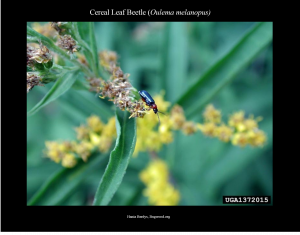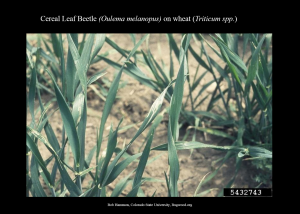Cereal Leaf Beetle
go.ncsu.edu/readext?898232
en Español / em Português
El inglés es el idioma de control de esta página. En la medida en que haya algún conflicto entre la traducción al inglés y la traducción, el inglés prevalece.
Al hacer clic en el enlace de traducción se activa un servicio de traducción gratuito para convertir la página al español. Al igual que con cualquier traducción por Internet, la conversión no es sensible al contexto y puede que no traduzca el texto en su significado original. NC State Extension no garantiza la exactitud del texto traducido. Por favor, tenga en cuenta que algunas aplicaciones y/o servicios pueden no funcionar como se espera cuando se traducen.
Português
Inglês é o idioma de controle desta página. Na medida que haja algum conflito entre o texto original em Inglês e a tradução, o Inglês prevalece.
Ao clicar no link de tradução, um serviço gratuito de tradução será ativado para converter a página para o Português. Como em qualquer tradução pela internet, a conversão não é sensivel ao contexto e pode não ocorrer a tradução para o significado orginal. O serviço de Extensão da Carolina do Norte (NC State Extension) não garante a exatidão do texto traduzido. Por favor, observe que algumas funções ou serviços podem não funcionar como esperado após a tradução.
English
English is the controlling language of this page. To the extent there is any conflict between the English text and the translation, English controls.
Clicking on the translation link activates a free translation service to convert the page to Spanish. As with any Internet translation, the conversion is not context-sensitive and may not translate the text to its original meaning. NC State Extension does not guarantee the accuracy of the translated text. Please note that some applications and/or services may not function as expected when translated.
Collapse ▲Cereal leaf beetle (Oulema melanopus) colonizes wheat, oats, and other small grains. Beetles infest wheat and other grains in the early spring and often build-up very high populations. The larvae pupate and resulting adults emerge in late-May/early-June from these fields. The adults emerge as the grain crops are maturing and migrate to corn fields to find food. If corn is adjacent to infested small grain plants may become highly infested with the beetles, especially along edges nearest the small grains. Cereal leaf beetles eat the leaf surface tissue on whorl stage plants. See scouting guidelines for whorl feeding insects. Feeding scars appear as long and narrow streaks eaten between leaf veins, usually on the upper surface. Even when beetle populations are very high, leaf feeding is usually cosmetic. However, injury is often alarming to farmers even if it poses no economic threat. Beetles do not reproduce or remain for a very long time in corn fields and, therefore, injury is a single, short term event that fast growing corn plants soon overcome.




